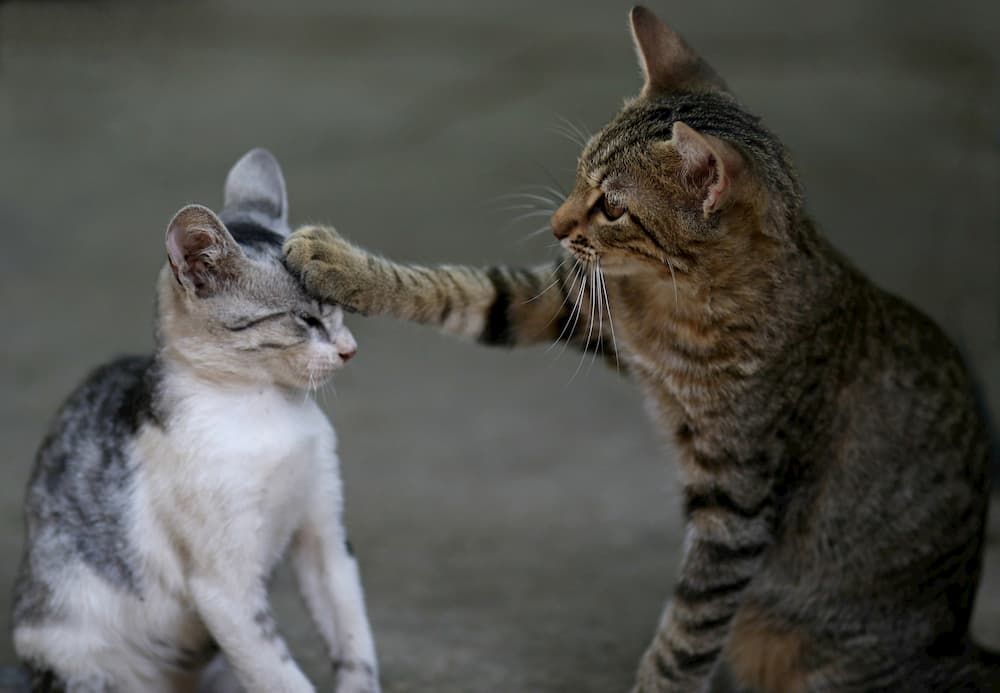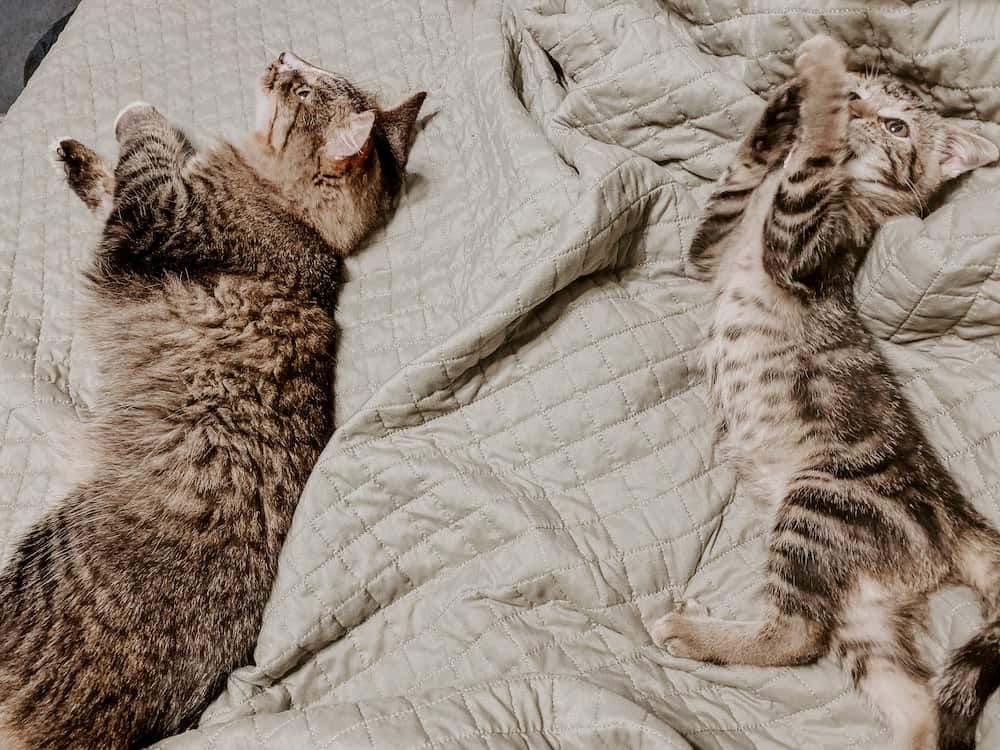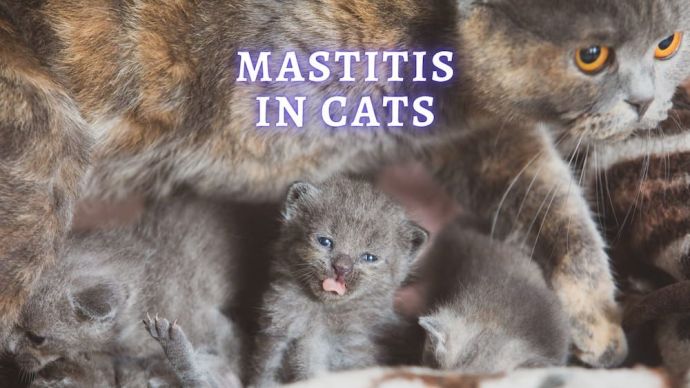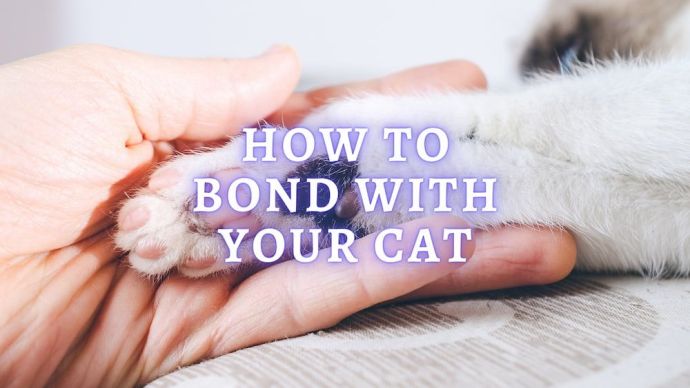Cat Hissing at a New Kitten: Reasons and Training
Written by:
Author: Alina Andreeva
Alina A. is a professional writer, editor, and pet-lover. She has published over 50 articles on how to care for pets properly. Alina has been writing articles for 3 years, so she has considerable experience in this niche. Her natural curiosity helps her to expand her knowledge and learn new pet care life hacks, which will make your life much easier.
View all 79 articlesLearn about our editorial process and veterinary review board.
Reviewed by:
Veterinary review
by Dr. Sara Ochoa
Dr. Sara Redding Ochoa is a veterinarian with many years of experience and higher education. During her time in veterinary school she was able to learn form some of the most well-known veterinarians from all over the world. Sara lives happily with her husband Greg and her babies Ruby the schnoodle, and Bam-Bam her bunny. Dr. Sara Redding Ochoa has a passion and love for animals that makes her a wonderful asset to our team.
View all 13 articlesLearn about our veterinary review board
Viewed: 269
Updated on: 05/16/2023
Even if your feline buddy is very affectionate and friendly, you should not expect him to become more friendly towards other animals with aging. The cat’s instincts and character do not change, his habits take root, and cats are reluctant to change them.
A successful introduction of a new feline to your grown-up pet is a daunting task, and in many respects, it depends on the older pet’s age. The ideal age for joint adaptation of two felines in the house is up to 3 years. Getting an adult pet along with another grown-up feline is much more difficult. With aging, it will be harder for a pet to accept new living conditions. But despair: there are no hopeless situations in this case. The main thing is to find the right approach to training your existing cat to accept a new fur baby, and your feline companions will live in complete harmony.
Why is Your Older Cat Hissing at a New Kitten?
1. Disrupted daily routine can cause your cat to feel uneasy
Cats like to be in the driver’s seat! They hate changes, so they may feel unsettled because of newcomers. Make sure you share your attention with your feline friends – cat parents may need to give their grown-up pets more attention than usual.
If your cat feels uneasy, he may hiss, growl, or show other signs of aggression. Keep your cat’s schedule as close to his daily routine as possible so that the only change he will experience is a new fur baby. Your adult pet will feel much better if he controls his surroundings [1].
2. Your cat doesn’t want to share his space with a new kitten
Your grown-up cat has been the master of the house for a while; he is used to doing things his way, and when you add a second feline to the family, he may refuse to share his pad with the newcomer. You should have enough resources for your fur babies; install one litter box per cat, with one additional, in different places. Ensure your older pet doesn’t show unhappiness by relieving himself outside the box. Each pet needs access to his own food, water, cat tree, and litter box – they will also love to have their own toys and hide-out and napping spots! [2]
3. Your cats may be of the same gender, or your resident cat may not accept a new feline for his playfulness
Some felines may resent each other because they have the same gender. If your pets are both males, they are highly likely to become aggressive toward each other [3]. However, the resident’s pet is the first to start showing aggression.
Also, your grown-up pet may resist the newcomer because he doesn’t like his dynamic and playful nature. Before taking home a new fluff ball, ensure it is compatible with your pet. Older felines usually don’t want to accept a new mischievous kitten.
READ MORE: How much does taking Care of a Cat Cost
READ MORE: Signs Your Cat Loves You
How To Train Grown-up Cat to Accept a New Kitten
While your cats may never become best friends, most domestic pets, although they have solitary nature, still find ways to be on good terms. Some may even behave like littermates in the long run, but you should arm yourself with patience. Here are several tips on how to introduce a new kitty to your resident pet.
1. Keep your cats segregated at first
Don’t throw your new kitten directly into the mix. This will scare the kitten and make your resident pet angry. Instead, keep them separately where they can observe each other from a safe distance. Make sure they have their own litter box, bed, bowl, and toys. This adaptation period will help your feline companions get used to each others’ scents and will keep the environment peaceful.[4]
2. Mingle your cats’ scents
Smells play a significant role in the cat world. Your existing pet may resent a newcomer because he has a strange, unfamiliar scent. By mingling odors, you can help your resident cat to accept a new fur baby much faster. Here are some ways:
- Switch their beds. The bed retains the cat’s smell. By switching the beds, you will mingle their scents.
- Wipe the new kitten with a wet towel, then wipe the resident cat with the same towel. This trick will make the pet smell someone else’s scent, and he quickly adapts to it.
3. Allow your cats to meet while segregated
After about a week, try moving on to the next step, allowing cats to see and sniff each other through a partition. Don’t leave them alone. Each pet has its own temperament. You cannot predict how your four-legged friend will react to the baby. Some show curiosity and quickly become friendly. But the majority shows indifference or even aggression to a newcomer. Make sure that the existing cat does not harm or frighten the new kitten.
If the housecat hisses at the kitten, this is normal behavior. Let the pets observe each other from a distance. But if he goes on the offensive, strives to scratch or bite the new kitty, interrupt the acquaintance. You may need to keep your pets separated a bit longer before finally bringing them together.
4. Give each cat separate facilities
Once you’ve put both fluff balls together in a shared surrounding, don’t force them to get close. Ensure they each have their own bed and not next to each other, two bowls, and litter boxes in different parts of your home.
This will reduce stress and allow each cat to feel independent so they can become friends when they are really ready. If your pets feel they have control over the situation, they are much more likely to give you the positive results you expect.[5]
READ MORE: How to Help Cats and Dogs Get Along
The Bottom Line
Don’t worry if your feline companions do not get along. Sometimes pets do not accept each other for several months, and then they yearn even from a short separation.
Article Sources:
- Turner, Dennis. “The Domestic Cat.” Cambridge Core, cambridge.org/core/books/domestic-cat/7AC4E7346091BBB7689A6751971B47F2.
- Stella, Judi. “Effects of Stressors on the Behavior and Physiology of Domestic Cats.” PubMed Central (PMC), 31 Jan. 2013, ncbi.nlm.nih.gov/pmc/articles/PMC4157662/.
- “My Cat Is Being Aggressive towards My Other Cat, What Should I Do?” RSPCA Australia, 30 Apr. 2019, kb.rspca.org.au/knowledge-base/my-cat-is-being-aggressive-towards-my-other-cat-what-should-i-do.
- Cohen, Hsin-Yi. “Introducing a Kitten to Other Cats.” Safer Pets, 30 Aug. 2020, saferpets.co.uk/IntroducingAKittenToOtherCats.html.
- “Aggression Between Cats in Your Household.” ASPCA, aspca.org/pet-care/cat-care/common-cat-behavior-issues/aggression-between-cats-your-household.
 Cat Care Can Cats Eat Catnip? Are There Any Health Benefits to Cats Eating Catnip?
Cat Care Can Cats Eat Catnip? Are There Any Health Benefits to Cats Eating Catnip? - 84
- 0
 Cat Veterinary Tips Skin Allergies in Cats: Causes, Symptoms, and Treatment (Vet Advice)
Cat Veterinary Tips Skin Allergies in Cats: Causes, Symptoms, and Treatment (Vet Advice) - 513
- 0
 Cat Care Why Does My Cat Attack My Legs? 10 Reasons Why and What To Do About It (Vet-Approved Advice)
Cat Care Why Does My Cat Attack My Legs? 10 Reasons Why and What To Do About It (Vet-Approved Advice) - 45566
- 21
 Cat Veterinary Tips Cat Stomach Gurgling: Vet Advice on Why is Your Cat Stomach Gurgling?
Cat Veterinary Tips Cat Stomach Gurgling: Vet Advice on Why is Your Cat Stomach Gurgling? - 35340
- 4
 Cat Veterinary Tips My Cat Lost its Voice: Can Cats get Laryngitis? (Vet Advice)
Cat Veterinary Tips My Cat Lost its Voice: Can Cats get Laryngitis? (Vet Advice) - 23247
- 13
























